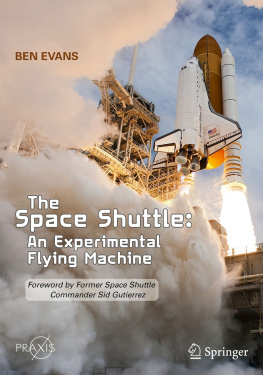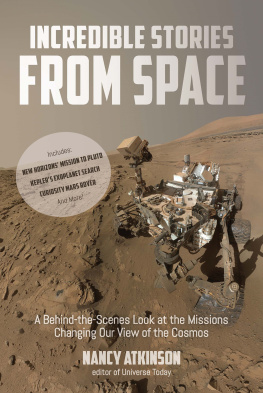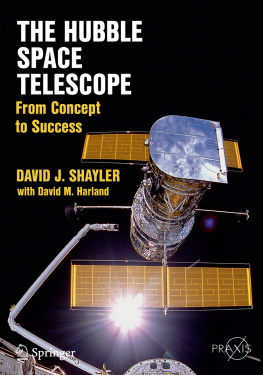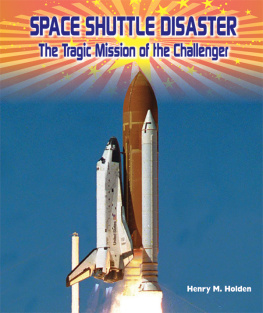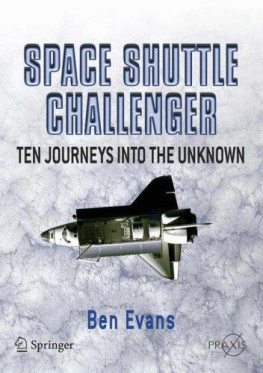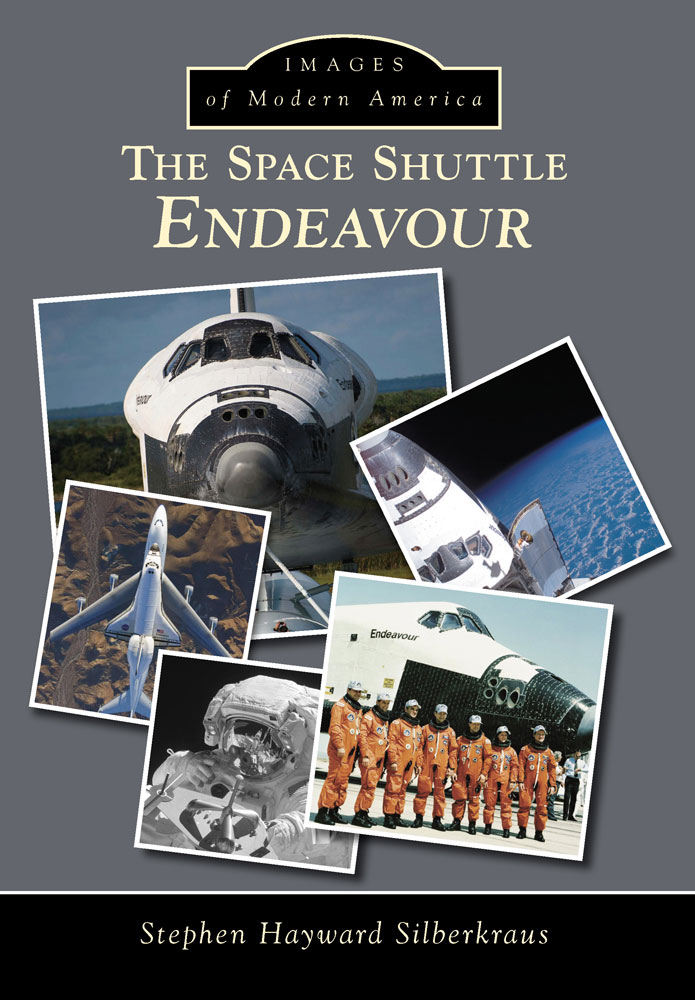
IMAGES
of Modern America
THE SPACE SHUTTLE
ENDEAVOUR
ON THE FRONT COVER: Clockwise from top left:
Space Shuttle Endeavour atop SCA (authors collection), Endeavour in orbit (courtesy of NASA), STS-49 crew with the orbiter (courtesy of NASA), astronaut Edward Michael Fincke outside the International Space Station (courtesy of NASA), Endeavour flies over the desert (courtesy of NASA).
ON THE BACK COVER: From left to right:
NASA workers say goodbye (authors collection), Endeavours final touchdown (courtesy of NASA), shuttle in orbit (courtesy of NASA).
IMAGES
of Modern America
THE SPACE SHUTTLE
ENDEAVOUR
Stephen Hayward Silberkraus

Copyright 2014 by Stephen Hayward Silberkraus
ISBN 978-1-4671-3157-5
Ebook ISBN 9781439642641
Published by Arcadia Publishing
Charleston, South Carolina
Library of Congress Control Number: 2013951096
For all general information, please contact Arcadia Publishing:
Telephone 843-853-2070
Fax 843-853-0044
E-mail
For customer service and orders:
Toll-Free 1-888-313-2665
Visit us on the Internet at www.arcadiapublishing.com
For Sawyer.
CONTENTS
ACKNOWLEDGMENTS
Over the course of the last few years, there have been many individuals and organizations that have been kind enough to help me with my documentary work. First and foremost, I must thank the National Aeronautics and Space Administration (NASA) for allowing me access and giving me support while documenting Endeavour and her fellow shuttles. Moreover, I would like to especially thank the following individuals at NASA for their personal support: Bartholomew Pannullo, Deborah Awtonomow, Jeff Moore, Guy Noffsinger, Richard Brewer, William Carr, Ken Thornsley, Lisa Fowler, the firefighters at Kennedy Space Center (KSC), Jennifer Horner, F. Robert Smith, and Charles F. Romeo.
I would also like to thank the California Science Center, the Society of Camera Operators, and the following individuals: Jeffrey N. Rudolph, Haley Jackson, Christopher Gabriel, Jeannie D. Neill, Fred Silberkraus, Melissa Eccles, Victor Hernandez, Chuck Null, Chelyn Sawyer, Chris Tufty, Jessica Jurges, Mark August, Dave Frederick, Don Wright, David Knight, Tom Lanny, Nicole Fleit, Rachel Lippert, Ralph Burris, Steve Blair, Steve Soboroff, Wiliam T. Harris, Jason Knight, Ken Phillips, Jeremy Sultan, Dan Kneece, Nicolas Levene, and Haskell Wexler.
And lastly, thank you to my family for their support and encouragement; I would be nothing without them.
INTRODUCTION
Born out of tragedy and like none of its predecessors, Space Shuttle Endeavour would go on to perform many vital and historical missions for humanity over the course of her 25 missions and 19-year career.
After the devastating Challenger disaster in 1986, there was hope for a new and improved Space Shuttle orbiter. When Congress gave authorization, serious consideration was given to refitting the test orbiter Enterprise (OV-101). Due to cost and time requirements, this was quickly turned down; it was far cheaper and faster to build a new orbiter. So, using structural spares created during the construction of Discovery and Atlantis, construction of NASAs newest (and last) orbiter began in February 1982.
Initially cobbled together from leftovers, this phoenix rose high and strong to become a ship that would inspire pride and admiration. As a lasting legacy, Endeavour would not only begin constructing the International Space Station (ISS), but would also be the orbiter to complete the US segment assembly.
Named through a national competition of students, Endeavour pays homage to Captain Cooks HMS Endeavour, the discoverer of new lands, including the Hawaiian islands. Astronomers on board Cooks Endeavour calculated Earths distance from the sun, establishing the value of scientists on voyages of discovery. Furthermore, the name also recognizes the command module of Apollo 15.
Space Shuttle Endeavour never failed in her mission to expand humanitys knowledge of space. She took the world to new, unimagined territories with revelations about the planet and helped bring to reality the International Space Station.
At her first launch, on May 7, 1992, she was equipped with state-of-the-art equipment. When the solid rocket boosters ignited, Endeavour was transported into history along with her seven-member crew, rendezvousing with the Intelsat VI satellite stranded in low Earth orbit when a Titan rocket launch system failed to place it in its correct orbit. After three attempts with three crew members, a bar was attached, a live rocket-engine kit installed, and the satellite was released into orbit. It was a record-making mission: the first where an Extra Vehicular Activity (EVA) involved three people, and the first time a live rocket kit was attached to a satellite in space during an EVA. The first mission to feature four EVAs, it was the longest single Space Shuttle mission at the time (25 hours and 27 minutes) and the longest maiden voyage of five operational shuttle orbiters (8 days, 21 hours, 17 minutes, and 38 seconds). Over her history, there were a myriad of achievements and records.
STS-47 was the first on-time launch since November 1985; it also marked the first time a Japanese astronaut flew aboard the Space Shuttle and the first flight of an African American woman and of a married couple.
STS-61 was the first Hubble Space Telescope servicing mission, revitalizing Hubble and correcting its vision. After a record five back-to-back space walks, Hubbles altitude was raised by Endeavour with a series of two thruster firings. Endeavour redeployed Hubble into Earths orbit to again beam crystal clear images of the cosmos back to Earth. This mission carried the highest-percentage risk of catastrophic failure ever given1 in 150.
A permanent, space-based work platform had always been a goal for NASA, so STS-88 was arguably the second of Endeavours two most important missions, taking an International Space Station from planning to reality being the most important. Now Endeavours role would be in scientific achievements in low Earth orbit and international cooperation. Construction of the ISS began in December 1998. Over 12 days, the crew mated the Unity module to OV-105s Orbiter Docking System (ODS) on FD-3, rendezvoused with and grappled the Zarya module on FD-4, and conducted two spacewalks to successfully connect power and data cables.
Endeavours missions collected a trillion measurements of Earths topography to create better maps, enhance water drainage modeling, make more realistic flight simulation, improve the search for cell phone tower locations, and enhance navigation safety. Over the course of 222 hours of mapping, her radar images filled 332 high-density tapes, covered 99.98 percent of the planned mapping area at least once, and 94.6 percent of it twice. She compiled enough data to fill 20,000 CDs.
Her 15th mission, STS-97, was the 101st Space Shuttle mission and the last manned spaceflight of the 20th century. She was the first to visit the populated ISS, and the first shuttle mission, STS-108, to launch after the attacks on September 11, 2001. Endeavour carried with her into space a tattered American flag from ground zero, memorabilia of fallen NYPD and FDNY personnel, and a myriad of commemorative flags. Aboard for his first space flight was pilot Mark E. Kelly, the man who would be the final commander of
Next page

